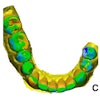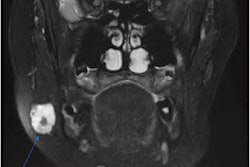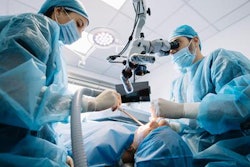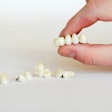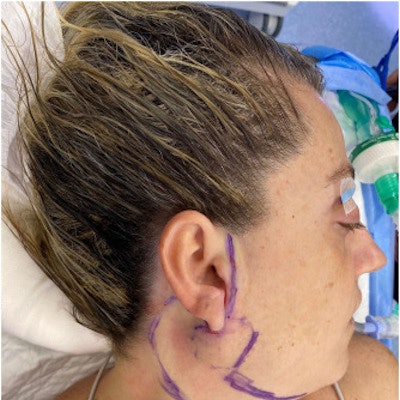
Applying ultrasound gel to a patient's hair prior to craniofacial or maxillofacial surgery can contain tresses and prevent hair from invading a surgical site, according to a short communication published on May 15 in Advances in Oral and Maxillofacial Surgery.
The technique, which was used on a female patient prior to a surgery to remove her parotid glands, offers a quick, affordable, damage-free way to contain hair during a surgical procedure, the authors wrote.
"This technical note introduces a simple way to keep hair away from the surgical site," wrote the authors, led by Dr. Ciro Emiliano Boschetti of the multidisciplinary department of medical and dental specialties at the University of Campania in Naples, Italy. "It is economical and readily available in all hospitals. It can be easily applied. Its ingredients are hypoallergenic and do not damage the hair. It's gluey consistency makes it perfect to keep the hair in place."
Though most surgical site infections are preventable, they remain a major problem. One preoperative measure that can be taken to reduce the risk of infection is to control hair located near the surgical site, especially in craniofacial and maxillofacial procedures, according to the communication.
Hair in a surgical area may favor the development of infections, impair wound closure, and obscure a surgical site. Furthermore, World Health Organization guidelines state that hair shouldn't be removed. However, clippers should be used if it is required. Also, hair should never be shaved because it is linked with microscopic skin trauma that may cause a surgical site infection, the authors wrote.
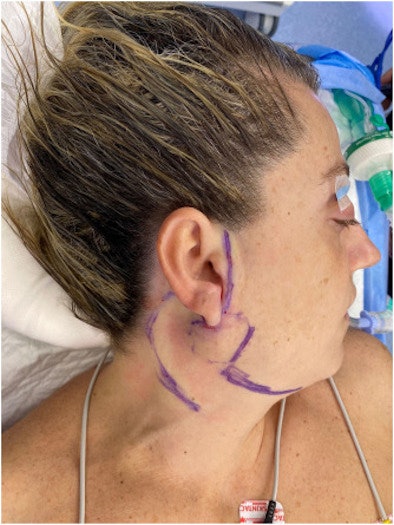 A patient with ultrasound gel applied to her hair to prevent hair from interfering with the surgical site. Image courtesy of Boschetti et al. Licensed by CC BY 4.0.
A patient with ultrasound gel applied to her hair to prevent hair from interfering with the surgical site. Image courtesy of Boschetti et al. Licensed by CC BY 4.0.To test the effectiveness of using ultrasound gel to manage hair, Boschetti's team used the following five steps to prep a patient scheduled to undergo a parotidectomy:
- Before entering the operating room, the woman's long hair was loosely tied back into a ponytail.
- After placing her in a surgical position, the patient's head was tilted slightly to the desired side, and her ponytail was tucked inside the underlying rubber ring.
- A surgeon drew the incision line and administered local anesthesia.
- Hair that was close to the incision site was lifted and a thin layer of ultrasound gel was applied to keep it in place and out of the surgical area.
- The patient was scrubbed with povidone iodine and draped in the usual manner.
The team chose ultrasound gel because it is composed of water and propylene glycol, which is commonly found in food, hygiene, and cosmetic products. The ingredients also make the gel sticky, with a consistency similar to hair gel, but ultrasound gel is hypoallergenic and doesn't contain fragrances or other ingredients that can lead to damage.
Further, the gel is available in sterile packs, so it won't taint a surgical area. It can also easily be rinsed out with saline solution after a procedure, the authors wrote.
"The [ultrasound] gel can be used in any hair-bearing area of the scalp, thereby it might represent a promising method in craniofacial and maxillofacial surgery," Boschetti and colleagues concluded.



